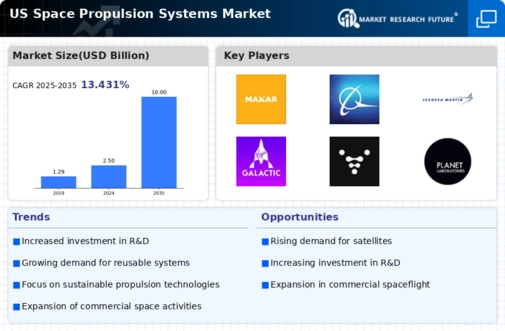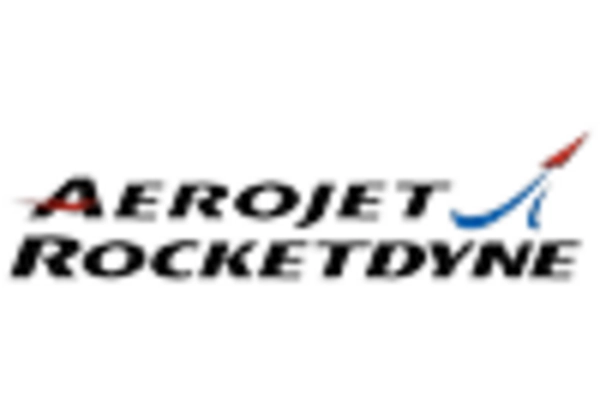Government Initiatives and Funding
Government initiatives and funding play a crucial role in shaping the space propulsion-systems market. The U.S. government has been actively investing in space exploration and technology development, with agencies like NASA and the Department of Defense allocating substantial budgets for propulsion research. In 2025, federal funding for space-related projects is estimated to surpass $25 billion, reflecting a strong commitment to advancing space capabilities. These investments not only support the development of new propulsion technologies but also stimulate collaboration between public and private sectors. As a result, the space propulsion-systems market is likely to benefit from enhanced innovation and increased competition, driving growth and technological advancements.
Focus on Sustainable Space Operations
The focus on sustainable space operations is becoming a pivotal driver in the space propulsion-systems market. As concerns about space debris and environmental impact grow, there is an increasing emphasis on developing propulsion systems that minimize waste and enhance sustainability. Technologies such as green propellants and reusable launch systems are gaining traction, as they align with the industry's shift towards responsible space exploration. By 2025, it is anticipated that sustainable propulsion solutions will constitute a significant portion of new developments, reflecting a broader commitment to environmental stewardship. This trend not only addresses regulatory pressures but also appeals to a growing segment of environmentally conscious stakeholders.
Growing Demand for Satellite Launches
The increasing demand for satellite launches is a primary driver of the space propulsion-systems market. As various sectors, including telecommunications, Earth observation, and scientific research, expand their reliance on satellite technology, the need for efficient and reliable propulsion systems becomes paramount. In 2025, the market for satellite launches is projected to reach approximately $30 billion, indicating a robust growth trajectory. This surge in demand necessitates advancements in propulsion technologies to ensure timely and cost-effective launches. Consequently, companies in the space propulsion-systems market are likely to innovate and enhance their offerings to meet the evolving requirements of satellite operators, thereby fostering a competitive landscape.
Emergence of Commercial Space Ventures
The emergence of commercial space ventures is reshaping the landscape of the space propulsion-systems market. Private companies are increasingly entering the space industry, driven by the potential for profit and innovation. This influx of commercial players is fostering competition and encouraging the development of novel propulsion systems tailored to specific mission profiles. In 2025, the commercial space sector is projected to account for over 60% of total launches, highlighting its growing influence. As these companies seek to differentiate themselves, they are likely to invest in cutting-edge propulsion technologies, thereby propelling the market forward and expanding the range of available solutions.
Advancements in Propulsion Technologies
Technological advancements in propulsion systems are significantly influencing the space propulsion-systems market. Innovations such as ion propulsion, hybrid systems, and advanced chemical propulsion are being developed to improve efficiency and reduce costs. For instance, ion propulsion systems, which utilize electric fields to accelerate ions, offer higher specific impulse compared to traditional chemical rockets. This shift towards more efficient propulsion technologies is expected to enhance mission capabilities and reduce operational costs. As of 2025, the market is witnessing a transition towards these advanced systems, with investments in research and development projected to exceed $5 billion. This trend indicates a strong commitment to enhancing propulsion technologies within the industry.

















Leave a Comment